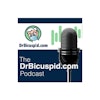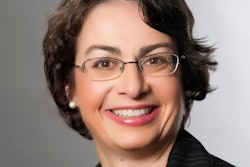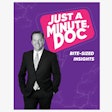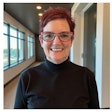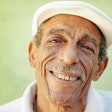
As dental practices and teams move away from paper charts and handwritten clinical notes and toward the digital environment, understanding the differences in maintaining the patient record becomes increasingly important.
Many team members think that not having a paper chart equals going paperless, but there is more to it than that. There is a difference as to whether a practice is paperless or chartless and the requirements that each demands.
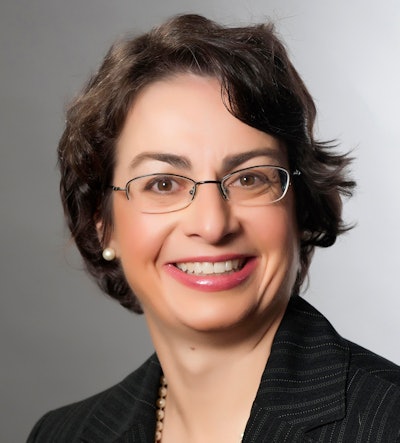 Ann-Marie DePalma, CDA, RDH, MEd.
Ann-Marie DePalma, CDA, RDH, MEd.A paperless practice is one where all information (from patient demographics and communication to clinical notes to accounting and insurance processing) is done electronically. Paper may be received, but it is scanned into the practice management software and then destroyed.
A chartless practice, meanwhile, is one where things such as patient information and clinical notes are in the practice management software, but the practice may generate and/or keep paper documentation.
Each practice must decide whether going paperless or chartless is the best goal and option for that business. This article will review what is required for either a paperless or chartless practice to be successful.
When the Affordable Care Act was passed, there was a mandate that medical practices were required to convert their patient records and communication to the digital world. However, most dental practices, with a few exceptions, were not required to move to the paperless environment.
Over the past few years, however, as patients are becoming more accustomed to receiving healthcare information digitally, they are also looking to their dental providers to do the same. Going digital, whether as a paperless or chartless practice, has one goal in mind: To benefit the patient. How a practice and team decide to accomplish that goal depends on the practice.
Many dental teams and practices don't want to be completely paperless because they are afraid of "the computer crash" and not being able to obtain essential information. It is a fact of life in the 21st century that computers crash or have other issues. The difference between a practice that embraces the paperless or chartless mentality and one that doesn't is that there is a protocol in place in the event technology is not available.
Teams also need to understand that a component of HIPAA requires that a disaster plan be implemented. Having the appropriate hardware, internet access and speed, and stable networking environment also add to the technology checkpoints prior to embarking on the journey to becoming paperless or chartless.
Does the practice have up-to-date practice management software? The latest version of any software includes improvements, as well as fixes to issues and enhanced security. Not being on the latest version can cause several concerns for the practice. If the practice is looking to move toward becoming paperless or chartless, the latest version of the practice management software can assist in the process.
Additionally, it is important that the team has been trained on the latest information contained in the software. Vendors update the programs regularly and teams often lack the appropriate training to accomplish everyday tasks. This can lead to frustration and improper information. Dedicated training time is essential when a practice decides to move to the digital environment. Each software vendor offers a variety of training options, from in-house team training to remote access. A practice moving to becoming paperless or chartless needs to avail itself of the training available to be successful. Not utilizing the training is a recipe for failure.
Does the team understand the importance of documentation and follow the most appropriate note entry protocol, whether documenting clinical notes in SOAP (subjective, objective, assessment, plan) format or patient conversations in the appropriate area? Is the current Code on Dental Procedures and Nomenclature (CDT Code) utilized in the software and does the team understand that services are coded based on the most appropriate code for the treatment provided? Without paper, the team is reliant on the documentation process, which is becoming more critical for reimbursement from third-party payors.
What is the practice's protocol for entering patient communication and clinical notes? A paperless or chartless practice details all information in the appropriate manner by all team members.
Does the practice utilize patient engagement solutions from text message reminders to online patient education materials? Gone are the days when a patient is handed a paper with information about a procedure. Patients now want to be entertained and engaged with any educational information. Many patients don't listen to phone messages, so utilizing text messaging services can be a definite benefit for the practice. There are a variety of options for patient engagement, depending on the practice's goal and budget.
For teams to make the successful transition to being paperless or chartless, the current patient flow from initial patient contact to dismissal needs to be documented. What are the steps currently used on paper? How will the steps be recreated in the paperless or chartless practice? Do new protocols and procedures need to be adopted? Who will be responsible for making sure the new steps are created and followed? How will paper records be used or inactivated during the transition process? These and many other questions need to be addressed.
Is your practice ready to take on the challenge of being paperless or chartless to enhance the patient experience? Understanding the process and answering the questions posed will assist you in undertaking the challenge with positive results.
Ann-Marie DePalma, CDA, RDH, MEd, is a fellow and certified educator of the Association of Dental Implant Auxiliaries (ADIA) and a fellow of the American Academy of Dental Hygiene (AADH). She spent more than 25 years in clinical hygiene and is currently employed as a technology adviser/trainer for Patterson Dental. She can be reached by email.
The comments and observations expressed herein do not necessarily reflect the opinions of DrBicuspid.com, nor should they be construed as an endorsement or admonishment of any particular idea, vendor, or organization.
